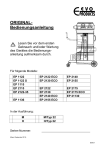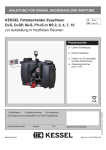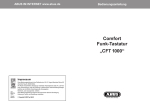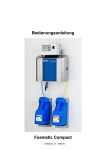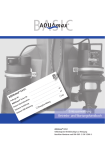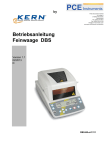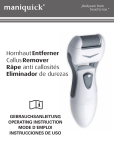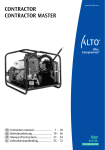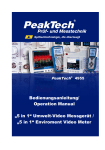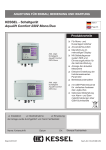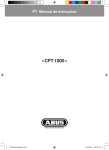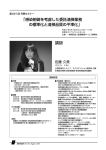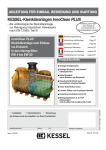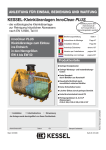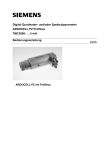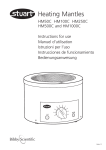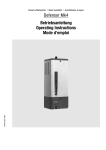Download KESSEL-Fettabscheider zur Selbstentsorgung
Transcript
ANLEITUNG FÜR EINBAU, BEDIENUNG UND WARTUNG KESSEL-Fettabscheider zur Selbstentsorgung „SE“ NS 2, 4, 7, 10 und 15 mit manueller Entsorgungseinrichtung Ausführung nach DIN 4040-100 oder Bedienungsanleitung16 Manual39 Ausführung nach DIN EN 1825-1 Produktvorteile Extra große Schlammvolumina Regelmäßige Entsorgung der frisch abgeschiedenen Fette und Schlämme auch während der Betriebszeit Separate Entsorgung von Fett und Schlamm Schwimmschlammabzug und zentrale Schlammabsaugung Installation Inbetriebnahme Einweisung der Anlage wurde durchgeführt von ihrem Fachbetrieb: D Name /Unterschrift Stand 08/2013 Datum Ort Stempel Fachbetrieb Sach-Nr. 010-913 Inhaltsverzeichnis 1Einleitung 1.1 4 Produktbeschreibung, allgemein....................................................................................... 4 1.2Ausführungen.................................................................................................................... 4 1.3Typenschild........................................................................................................................ 5 1.4Lieferumfang...................................................................................................................... 6 1.5 Allgemeine Hinweise zu dieser Betriebs- und Wartungsanleitung.................................... 6 1.6 Baugruppen und Funktionsmerkmale................................................................................ 7 1.6.1Schaltgerät......................................................................................................................... 9 2Sicherheit 10 2.1 Bestimmungsgemäße Verwendung................................................................................... 10 2.2 Personalauswahl und -qualifikation................................................................................... 10 2.3 Organisatorische Sicherheits-Maßnahmen....................................................................... 10 2.4 Gefahren, die vom Produkt ausgehen............................................................................... 10 2.4.1 Gefahr durch elektrischen Strom und Kabel...................................................................... 10 2.4.2 Gefahr durch Hitze............................................................................................................. 11 2.4.3 Gefahr der Überhitzung der Heizhaube............................................................................. 11 2.4.4 Rutschgefahr beim Entleeren der Anlage.......................................................................... 11 2.4.5 Infektionsgefahr bei Kontakt mit dem Abwasser................................................................ 11 2.4.6 Explosionsgefahr durch Biogasbildung.............................................................................. 11 3Montage 3.1 12 Empfehlungen zum Aufstellort / Betrieb............................................................................ 12 3.2Einbauvorschlag................................................................................................................ 12 3.3 Fettabscheideanlage aufstellen / montieren...................................................................... 13 3.4Erstinbetriebnahme............................................................................................................ 14 3.4.1 Initialisierung durchführen.................................................................................................. 16 3.4.2 Funktionskontrolle durchführen......................................................................................... 16 4Betrieb 18 4.1Einschalten........................................................................................................................ 18 4.2 Entsorgungsintervall, Heiz- und Mischzeit (Option) einstellen........................................... 18 4.3 Automatische Schlammrückführung einstellen (Option).................................................... 19 4.4 Entsorgung (Vorlaufzeit und hydrostatischer Druck)......................................................... 20 4.4.1 Fettabscheider entleeren................................................................................................... 21 4.4.2 Schlammfang entleeren..................................................................................................... 21 2 / 72 V 1.0 Inhaltsverzeichnis 5 Einstellungen, Bedienmenü 22 5.1Menüstruktur...................................................................................................................... 23 6 Technische Daten 25 6.1 Allgemeine technische Daten / Anschlusswerte................................................................ 25 6.2 Maßzeichnung und Gewichtstabelle.................................................................................. 26 6.3Wartungsintervalle............................................................................................................. 27 6.4Fehlersuche....................................................................................................................... 27 6.6 Fettabscheider reinigen..................................................................................................... 30 6.7 Fettabscheideanlage zerlegen........................................................................................... 32 7 Anlagenpass / Werksabnahme 34 8Gewährleistung V 1.0 35 3 / 72 Einleitung 1 Einleitung Sehr geehrte Kundin sehr geehrter Kunde, wir freuen uns, dass Sie sich für den Erwerb eines unserer Produkte entschieden haben. Sicher wird dieses Ihre Anforderungen in vollem Umfang erfüllen. Wir wünschen ihnen einen reibungslosen und erfolgreichen Einbau. Im Bemühen unseren Qualitätsstandard auf höchstmöglichem Niveau zu halten, sind wir natürlich auch auf Ihre Mithilfe angewiesen. Bitte teilen Sie uns Möglichkeiten zur Verbesserung unserer Produkte mit. Haben Sie Fragen? Wir freuen uns auf Ihre Kontaktaufnahme. 1.1 Produktbeschreibung, allgemein Die Fettabscheideanlage ist als Selbstentsorgungssystem konzipiert. Das Abscheidegut kann jederzeit und bei laufendem Betrieb in die dafür vorgesehenen Entsorgungsbehälter eingefüllt werden. Es werden drei verschiedene Abscheidegutarten (Fett, Sinkstoff und Schwimmschlamm) aus dem Abwasser abgeschieden. Je nach Ausführung ist die Fettabscheideanlage mit einem elektrischen Rührwerk und einer Schlammrückführungspumpe ausgerüstet. Ein Schauglas ermöglicht ab der Premiumversion eine Sichtkontrolle des Schwimmschlammbehälters. Ein Schaltgerät überwacht und steuert die Anlagenfunktionen. 1.2 Ausführungen Die Fettabscheideanlage wird in diesen Ausführungen hergestellt: Ausstattungsmerkmale Premium Standard Basic Schwimmschlammfang x x x Mischerkurbel (für Rührwerk) x Mischer, motorgetrieben (Rührwerk) x x Entlüftung Heizhaube x x x Ablassventil x x x Pumpe Schlammrückführung x Schauglas x Belüftungssystem (Bubbler, Optional) x 4 / 72 V 1.0 Einleitung 1.3 Typenschild Informationen auf dem Typenschild Fettabscheideanlage 10 Revisionsstand der Hardware 52 80 52 Materialbezeichnung 53 79 53 Materialnummer 10 78 55 Norm 55 77 56 Freitext / Erklärung 56 76 57 Freitext / Erklärung 57 58 Freitext / Erklärung 58 75 Made in Germany 59 59 Freitext / Erklärung Abb. [1] 75 Freitext / Erklärung 76 Werkstoff 77 Zulassung 78 Bruttogewicht 79 Fertigungsdatum 80 Auftragsnummer Informationen auf dem Typenschild Steuergerät V 1.0 Bahnhofstraße 31 D-85101 Lenting 1 Bezeichnung des Schaltgerätes 2 Material-Nummer des Schaltgerätes 3 Anschlussspannung und Anschlussfrequenz 4 Stromaufnahmebereich 5 Schutzart (IP) 6 Seriennummer des Schaltgerätes 7 Ersatzteilnummer des Schaltgerätes 8 10 8 Gefahrenzeichen (elektr. Schaltgerät) 9 11 9 Schutzklasse I - Schutzerdung 10 CE Kennzeichnung 11 Problemstoff Elektrogerät - Entsorgung nicht über den Hausmüll! 12 Revisionsstand der Hardware 1 2 3 4 FA SE 7 363-232 (363-403) Ue: 400 VAC - 50 Hz Ie: 6,3 - 10,0 A IP 54 5 6 5 / 72 SerNr. XXXX RevStd. X.X SachNr. 363-310 Abb. [2] 12 Einleitung 1.4 Lieferumfang –– Fettabscheideanlage (siehe 1.6) –– Betriebs- und Wartungsanleitung 1.5 Allgemeine Hinweise zu dieser Betriebs- und Wartungsanleitung Verwendete Symbole und Legenden <1> [2] Hinweis im Text auf eine Legendennummer in einer Abbildung Bezug auf eine Abbildung • Arbeitsschritt 3. Arbeitsschritt in nummerierter Reihenfolge – Aufzählung Kursiv Kursive Schriftdarstellung: Bezug zu einem Abschnitt / Punkt im Steuerungs-Menü VORSICHT: Warnt vor einer Gefährdung von Personen und Material. Eine Missachtung der mit diesem Symbol gekennzeichneten Hinweise kann schwere Verletzungen und Materialschäden zur Folge haben. Hinweis: Technische Hinweise, die besonders beachtet werden müssen. 6 / 72 V 1.0 Einleitung 1.6 Baugruppen und Funktionsmerkmale Abbildung zeigt Ausführung Premium 23 33 29 31 30 32 35 13 16 36 28 26 39 40 11 27 17 41 18 42 47 48 25 19 46 38 21 20 24 44 Abb. [3] 11 Schauglas* 13 Typenschild 16 Zulauf 17 Entlüftung Entsorgungsbehälter Sinkstoff 18 Entlüftung Entsorgungsbehälter Schwimmschlamm 19 Entlüftung Entsorgungsbehälter Fett 20 Entsorgungsbehälter Sinkstoff 21 Entsorgungsbehälter Schwimmschlamm 22 Entsorgungsbehälter Fett 23 Revisionsdeckel Schlammfang 24 Schlammfang 25 Ablassventil Sinkstoff 26 Ablassventil Schwimmschlamm 27 Ablassventil Fett 28 Schaltgerät V 1.0 7 / 72 37 34 45 43 51 22 Einleitung 29 Durchlüftungsrohr 30 Revisionsdeckel Ballance-Tower 31 Ballance-Tower 32 Anschluss für Be- und Entlüftungsleitung 33 Schlammrückführungsleitung* 34 Pumpe Schlammrückführung* 35 Ablauf 36 Entlüftung Heizhaube 37 Zulauf Fettabscheider 38 Fettabscheider 39 Mischerkurbel (für Rührwerk)*** 40 Mischermotor (für Rührwerk)* / ** 41 Stromversorgung Heizhaube 42 Heizhaube 43 Ablauf Fettabscheider 44 Ablassventil Restentleerung 45 Ventil Schlammrückführung* 46 Ablassschlauch Sinkstoff 47 Ablassschlauch Schwimmschlamm 48 Ablassschlauch Fett 51 Ablassöffnung Restentleerung 51 * 51 ** 51 *** Abb. [4] * Ausführung Premium ** Ausführung Standard 8 / 72 *** Ausführung Basic V 1.0 Einleitung 1.6.1 Schaltgerät Bedienung, Funktionstasten Navigationstasten für das Menü Fettabscheider/Grease Seperator „SE“ 64 LED Betriebsbereit 69 LED Alarm 71 Alarm Quittierung akustischer Alarm 72 OK Bestätigen einer Eingabe, nächste Ebene 73 LED Handbetrieb 74 Handbetrieb Ein- / Ausschalten Handbetrieb 68 ESC Löschen einer Eingabe, zurück 66 Pfeil oben Blättern im Menü 67 Pfeil unten Blättern im Menü 64 69 71 66 73 74 68 67 72 Abb. [5] V 1.0 9 / 72 Sicherheit 2 Sicherheit 2.1 Bestimmungsgemäße Verwendung Die Fettabscheideanlage ist ausschließlich dafür vorgesehen das Abwasser von Abscheidegut und Fett zu befreien. Ein Einsatz der Anlage in explosionsgefährdeter Umgebung ist unzulässig. Alle nicht durch eine ausdrückliche und schriftliche Freigabe des Herstellers erfolgten –– Um- oder Anbauten –– Verwendungen von nicht originalen Ersatzteilen –– Durchführungen von Reparaturen durch nicht vom Hersteller autorisierten Betrieben oder Personen können zum Verlust der Gewährleistung führen. 2.2 Personalauswahl und -qualifikation Personen, die Fettabscheideanlage bedienen und/oder montieren, müssen –– mindestens 18 Jahre alt sein. –– für die jeweiligen Tätigkeiten ausreichend geschult sein. –– die einschlägigen technischen Regeln und Sicherheitsvorschriften kennen und befolgen. Der Betreiber entscheidet über die erforderlichen Qualifikationen für das –– Bedienpersonal –– Wartungspersonal –– Instandhaltungspersonal Der Betreiber hat dafür Sorge zu tragen, dass nur qualifiziertes Personal am Fettabscheider tätig wird. Qualifiziertes Personal sind Personen, die durch ihre Ausbildung und Erfahrung sowie ihrer Kenntnisse einschlägiger Bestimmungen, gültiger Normen und Unfallverhütungsvorschriften die jeweils erforderlichen Tätigkeiten ausführen und dabei mögliche Gefahren erkennen und vermeiden können. Arbeiten an elektrischen Bauteilen dürfen nur von dafür ausgebildetem Fachpersonal und unter Einhaltung aller geltenden Regelungen der Unfallverhütungsvorschriften (UVVen) vorgenommen werden. 2.3 Organisatorische Sicherheits-Maßnahmen Die Betriebs- und Wartungsanleitung ist stets an der Fettabscheideanlage verfügbar zu halten. 2.4 Gefahren, die vom Produkt ausgehen 2.4.1 Gefahr durch elektrischen Strom und Kabel Alle spannungsführenden Bauteile sind gegen unbeabsichtigte Berührung geschützt. Vor einem Öffnen von Gehäuseabdeckungen, Steckern und Kabeln sind diese spannungsfrei zu machen. Arbeiten an elektrischen Bauteilen dürfen nur von Fachpersonal (Siehe 2.2) durchgeführt werden. 10 / 72 V 1.0 Sicherheit 2.4.2 Gefahr durch Hitze Der Fettabscheider wird vor der Entsorgung erhitzt. Wird das Fett zur Entsorgung abgelassen, besteht die Gefahr von Verbrennungen beim Berühren des heißen Fettes. Persönliche Schutzausrüstung ist zu tragen. 2.4.3 Gefahr der Überhitzung der Heizhaube Wurde die Fettabscheideanlage vor Betriebsbeginn nicht ausreichend belüftet, kann ein Luftpolster im Inneren der Heizhaube zur Überhitzung führen. Fettabscheideanlage nur vollständig entlüftet in Betrieb nehmen. 2.4.4 Rutschgefahr beim Entleeren der Anlage Bei Reinigungsarbeiten und dem Hantieren mit den Entsorgungsbehältern kann fetthaltige Flüssigkeit und/oder Fett den Boden benetzen. Dadurch besteht Rutschgefahr. Ausgetretene Flüssigkeit und/oder Fett unmittelbar beseitigen und geeignetes Schuhwerk tragen. 2.4.5 Infektionsgefahr bei Kontakt mit dem Abwasser Das Abwasser enthält Bakterien. Bei Kontakt mit Schleimhäuten, Augen, Wunden oder bei einer Aufnahme in den Körper besteht Infektionsgefahr. Mit Abwasser in Berührung gekommene Körperteile sofort reinigen, verunreinigte Kleidung wechseln. Persönliche Schutzausrüstung tragen. 2.4.6 Explosionsgefahr durch Biogasbildung Bei Arbeiten am geöffneten Abscheider sowie beim Wechseln der Entsorgungsbehälter besteht Rauchverbot wegen möglicher Explosionsgefahr durch sich entzündendes Biogas. V 1.0 11 / 72 Montage 3 Montage 3.1 Empfehlungen zum Aufstellort / Betrieb –– Raum mit guter Belüftung oder/und Ventilation sowie ebener Aufstellfläche. –– Raumtemperatur mindesten 15° C. –– Bodenfliesen mit Ablaufstelle. –– Warmwasseranschluss –– Raumhöhe mindesten 30 cm höher als Höhe der Fettabscheideanlage, damit bei Reinigungsarbeiten die Revisionsdeckel geöffnet werden können. –– Freier Arbeitsraum, mindesten 1 m, umlaufend um die Fettabscheideanlage, oben 60 cm. –– Zulauf mit Beruhigungsstrecke von min. 1 m (Gefälle 1:50). Übergang hausseitiges Fallrohr zur Beruhigungsstrecke mit 2x 45°-Bögen ausgestattet1. –– Ist die Zulaufleitung länger als 5 m, muss diese separat entlüftet sein. –– Fremdkörper (Besteck, Kronkorken, Senftüten, Knochen etc.) stören den Abscheidebetrieb, die Entsorgung und können die Schlammrückführungspumpe (Option) beschädigen. 3.2 Einbauvorschlag Abb. [6] 1) Verringerung der Gefahr des Leersaugens von Siphons und Geruchsverschlüssen. Weniger Lufteintrag und -bewegung sowie Geruchs- und Schaumbildung im Abscheider. 12 / 72 V 1.0 Montage 3.3 Fettabscheideanlage aufstellen / montieren Muss die Fettabscheideanlage zum Transport an ihren Bestimmungsort demontiert werden, kann sie, wie im Kapitel 7.5 beschrieben, zerlegt werden. Die Fettabscheideanlage ist im befülltem Zustand schwer. Achten Sie auf einen ausreichend tragfähigen Untergrund (siehe „Technische Daten“, Seite 25). • Fettabscheideanlage auf ebener und ausreichend tragfähige Fläche aufstellen. • Alle Schraub- und Anschlussverbindungen auf festen Sitz und Dichtheit prüfen. • Leitungsverbindungen am Zu- <16> und Ablauf <35> montieren. V 1.0 13 / 72 Montage 3.4 Erstinbetriebnahme • • • • • Sicherstellen, dass sich keine Fremdstoffe oder Verunreinigungen im Fettabscheider befinden. Alle Ablassventile <25, 26, 27 und 44> schließen. Sicherstellen, dass das Ventil der Schlammrückführung <45> (Option) geöffnet ist. Gesamte Fettabscheideanlage vollständig mit Wasser befüllen (bis Anlagenüberlauf am Überlauf <35>). Nur Ausführung Basic (ohne Entlüftungsventil <36>): Fettabscheider entlüften, dazu Ablassventil Fett <27> öffnen, bis keine Luft sondern Wasser im Ablassschlauch <48> zu sehen ist. • Druckprüfung durchführen, dazu • Revisionsdeckel Schlammfang <23> öffnen. • Ablauf <35> und Zulauf <16> mit geeigneten Mitteln verschließen. • Fettabscheideanlage vollständig1 mit Wasser befüllen und sicherstellen, dass keine Undichtigkeiten vorliegen. • Funktionstüchtigkeit von Ablauf <35> und Zulauf <16> wieder herstellen 23 35 36 16 26 27 48 25 44 45 Abb. [7] 1) Bis auf 2 cm unterhalb der Revisionsöffnung am Schlammfang befüllen. 14 / 72 V 1.0 Montage • Stromversorgung Schaltgerät herstellen. • Hauptschalter einschalten, die Initialisierung beginnt. Während für ca. 4 Sekunden die LED‘s jeweils kurz leuchten, werden die elektrischen Bauteile überprüft und das Menü 3.8.1. Sprache angezeigt. Anschließend kann die Initialisierung durchgeführt werden. Wird im Display nicht die Initialisierung (Menü 3.8.1. Sprache) angeboten, wurde das Schaltgerät bereits initialisiert. In diesem Fall sind die eingestellten Parameter zu überprüfen oder die Werkseinstellungen herzustellen (siehe 5.1, Punkt 3.10, Rücksetzen). Nach der Herstellung der Werkseinstellungen wird automatisch die Initialisierung des Schaltgeräts angeboten. V 1.0 15 / 72 Montage 3.4.1 Initialisierung durchführen Die Bedienung des Schaltgeräte ist bei „Einstellungen, Bedienmenü“, Seite 22 beschrieben. Bei der Initialisierung werden folgende Eingaben erwartet: –– Sprache –– Datum / Uhrzeit –– Anzahl Heizstäbe –– Norm –– Nenngröße Sprache • OK betätigen. • Landessprache mit den Pfeiltasten auswählen und mit OK bestätigen, das Menü Datum/Uhrzeit wird angezeigt. Datum / Uhrzeit • Die jeweils blinkende Ziffer in Datum und Uhrzeit einstellen und mit OK bestätigen. Nach der letzten Eingabe, erscheint das Menü Anzahl Heizstäbe. Anzahl Heizstäbe • Keine Einstellungen vornehmen und ESC betätigen. • Pfeiltaste unten betätigen, Menü Norm wird angezeigt. Norm • Gewünschte Norm mit den Pfeiltasten auswählen und mit OK bestätigen, das Menü Nenngröße wird angezeigt. Nenngröße • Gewünschte Nenngröße mit den Pfeiltasten auswählen und mit OK bestätigen, das Menü 0. Systeminfo wird angezeigt, die Initialisierung ist abgeschlossen. 3.4.2 Funktionskontrolle durchführen Allgemeines Die Funktionskontrolle wird im Handbetrieb durch EIN- / AUS-Schalten folgender Systemkomponenten durchgeführt. –– Heizhaube –– Mischermotor (Option) –– Pumpe Schlammrückführung (Option) Der Handbetrieb wird durch Drücken der Taste Handbetrieb <70> aktiviert. Im Display wird das Menü 2.1.1 Handbetrieb angezeigt. 16 / 72 V 1.0 Montage Im jeweiligen Menüpunkt der o.g. Systemkomponenten kann die Einschaltdauer wie folgt eingestellt werden: • Taste OK betätigen, die Einschaltdauer der Systemkomponente kann eingestellt werden (max. 99:59 Min). Mit Bestätigung der letzten Ziffernposition der Einschaltdauer wird die Systemkomponente automatisch eingeschaltet. Die noch verbleibende Zeitspanne ist abzulesen. Heizhaube testen • Sicherstellen, dass die Abwassertemperatur im Fettabscheider unter der eingestellten Maximaltemperatur* liegt. • Handbetrieb aktivieren und im Menüpunkt Heizhaube die Einschaltdauer auf 20 Min. einstellen, das Aufheizen beginnt. Die Funktion der Heizhaube ist sichergestellt, wenn während der 20 Min. keine Fehlermeldung ausgegeben wird. * Werkseinstellung 50° C Mischermotor (Option) testen Der Mischermotor darf nur in Betrieb genommen werden, wenn sich die Heizhaube auf Betriebstemperatur (Werkseinstellung 50° C) befindet. Befinden sich verhärtete (kalte) Fettansammlungen in der Heizhaube, kann das Rührwerk beschädigt werden. • Handbetrieb aktivieren und im Menüpunkt Mischermotor die Einschaltdauer auf 05:00 (Min.) einstellen. • Sicherstellen, dass der Mischermotor läuft, dazu: Sichtkontrolle durch Aussparung am Motorflansch, die Antriebswelle kann beobachtet werden. Pumpe Schlammrückführung (Option) testen • Revisionsdeckel am Schlammfang abnehmen. • Handbetrieb aktivieren und im Menüpunkt Spülpumpe die Einschaltdauer auf ca. 00:30 (Min.) einstellen, die Pumpe Schlammrückführung wird eingeschaltet. • Sicherstellen, dass die Pumpe in der richtigen Drehrichtung läuft. Dazu Sichtkontrolle am Laufrad der Pumpe, es muss sich in Pfeilrichtung drehen. • Sicherstellen, dass durch die Pumpe Flüssigkeit in den Schlammfang gepumpt wird (Sichtkontrolle im Schlammfang). • Revisionsdeckel am Schlammfang verschließen. Die Fettabscheideanlage ist betriebsbereit. V 1.0 17 / 72 Betrieb 4 Betrieb 4.1 Einschalten Nach erfolgreicher Funktionskontrolle kann die Fettabscheideanlage eingeschaltet werden, dazu: • Hauptschalter einschalten. Nach erfolgreichem Systemtest erscheint im Display <65> das Menü 0 Systeminfo und die grüne LED <64> leuchtet, die Fettabscheideanlage ist betriebsbereit. Fettabscheider/Grease Seperator „SE“ 64 65 Wird nach dem Einschalten das Menue 3.8.1 Sprache angezeigt, Initialisierung durchführen (Siehe 3.4.1). Abb. [8] 4.2 Entsorgungsintervall, Heiz- und Mischzeit (Option) einstellen Der Entsorgungsintervall ist für die regelmäßige Entleerung der Fettabscheideanlage vorgesehen. Je nach Fettmenge im Abwasser kann der Zeitraum unterschiedlich lang sein. Vor einer Entsorgung muss der Fettabscheider mindestens 2 Stunden aufgeheizt worden sein, damit das angesammelte Fett abfließen kann. Wird verspätet entsorgt, ist die Betriebssicherheit der Fettabscheideanlage nicht gewährleistet! Zur Sicherstellung einer möglichst vollständigen Fettentleerung, wird das Fett im Fettabscheider unmittelbar vor der Entleerung durch den Mischermotor (Option) bzw. mit der Mischerkurbel durchgemischt. Ist ein Mischermotor vorhanden, kann die Dauer der Mischzeit eingestellt werden. Für den Normalbetrieb (Entsorgungsintervall täglich) wurden werkseitig folgende Parameter eingestellt. 60 61 62 Abb. [9] 60 Heizzeit 2 Stunden Heizhaube des Fettabscheiders beheizen 61 Schlammrückführung* 10 Sekunden Schlamm vom Fettabscheider in den Schlammfang pumpen. 62 Mischermotor * / Handkurbel ** 10 Minuten Durchmischung des Fettes * Option ** Kurbelumdrehung 1 bis 2 mal pro Sekunde 18 / 72 V 1.0 Betrieb Entsorgungsintervall und Heizzeit einstellen • Menü 3. Einstellungen / 3.1 Parameter / 3.1.1 Heizen auswählen. • Intervall wahlweise auf eine Wiederholung alle N Tage oder auf die Auswahl eines Wochentags einstellen. Unabhängig davon, wie lange die Heizdauer eingestellt wird, endet sie automatisch mit dem Tagesende. Beispiel: Heizbeginn 23:30, Dauer 120 Min., Ende der Heizzeit um 00:00, nach 30 Min., • Bei Start die Uhrzeit eingeben, an der das Aufheizen beginnen soll. • Bei Dauer die Zeit in Minuten (mindestens 120 Min.) eingeben, die geheizt werden soll. Mischzeit einstellen, wenn Mischermotor (Option) vorhanden ist • Menü 3. Einstellungen / 3.1 Parameter / 3.1.1 Mischen auswählen. • Mischzeit auf 10 Min. (Werksempfehlung) einstellen. Das Mischen wird automatisch so gestartet, dass es zeitgleich mit dem Ende der Heizzeit endet. 4.3 Automatische Schlammrückführung einstellen (Option) Sollte zu Beginn der Heizphase durchgeführt werden. • Menü 3. Einstellungen / 3.1 Parameter / 3.1.3 Spülen auswählen. • Schlammrückführung passend zum eingestellten Entsorgungszyklus einstellen. • Bei Start die Uhrzeit eingeben, an der die Schlammrückführung beginnen soll (Empfehlung: Beginn des Aufheizens). • Bei Dauer die Zeit in Sekunden (Werksempfehlung 10 Sekunden) eingeben, die die Pumpe eingeschaltet werden soll. V 1.0 19 / 72 Betrieb 4.4 Entsorgung (Vorlaufzeit und hydrostatischer Druck) Die Entleerung des Fettabscheiders ist nach dem Aufheizen der Heizhaube möglich (siehe 4.2). Damit der hydrostatische Druck (Das Abwasser drückt die zu entsorgenden Mengen aus dem Fettabscheider) möglichst gut ausgenutzt werden kann, empfehlen wir die dargestellte Entsorgungsreihenfolge: 1. Fett, 2. Schwimmschlamm, 3. Sinkstoffe. Nach einem Entleervolumen von 180 Ltr. (3 volle Entsorgungsbehälter), muss der Fettabscheider wieder mit (Ab-)Wasser bis zur maximalen Befüllgrenze aufgefüllt werden. Tipp: Entsorgung während dem alltäglichen Betrieb des Fettabscheiders durchführen. Dann läuft i.d.R. Abwasser nach - es muss kein Frischwasser zugeführt werden. Außerdem kann Heizenergie (Heizhaube) eingespart werden, wenn das Abwasser warm ist. 2. 3. 1. Abb. [10] 20 / 72 V 1.0 Betrieb 4.4.1 Fettabscheider entleeren Verbrennungsgefahr Beim Berühren des flüssigen und erhitzten Fettes besteht Verbrennungsgefahr. Persönliche Schutzausrüstung (Handschuhe, Spritzschutz etc.) tragen. Tritt kein Fett und kein Abwasser aus, ist das Fett nicht flüssig genug, die Heizzeit muss verlängert werden (siehe 4.4) oder der Füllstand vom Schlammbehälter ist zu niedrig. Abhilfe: Schlammbehälter vollständig befüllen. Sicherstellen, dass die Heizhaube über den erforderlichen Zeitraum aufgeheizt wurde! 1. 2. 3. 4. 5. 6. 7. 8. 9. Einen leeren Entsorgungsbehälter bereithalten. Sicherstellen, dass der an der Fettabscheideanlage angeschlossene Entsorgungsbehälter <22> leer ist. Ablassventil <27> öffnen, das Fett läuft in den Entsorgungsbehälter. Wenn im transparenten Ablassschlauch <48> anstelle des Fettes Abwasser zu sehen ist, das Ablassventil <27> schließen und weiter bei 7. Wenn der Volumenstrom im transparenten Ablassschlauch <48> zum Stillstand gekommen ist (Entsorgungsbehälter ist voll), das Ablassventil <27> schließen. Deckelspannring <50> lockern, so dass die Luft aus dem Entsorgungsbehälter <22> entweichen kann, das restliche Fett läuft in den Entsorgungsbehälter. Deckel vom Entsorgungsbehälter abheben und mit dem Deckelspannring auf dem leeren Entsorgungsbehälter montieren. Vollen Entsorgungsbehälter ausleeren (der Entsorgung zuführen). Vorgang von vorne wiederholen. 27 48 50 22 Abb. [11] 4.4.2 Schlammfang entleeren Das Befüllen der Entsorgungsbehälter für a) Sinkstoffe und b) Schwimmschlamm erfolgt analog zum Funktionsprinzip (Abb. [10]) der Entleerung des Fettabscheiders. V 1.0 21 / 72 Einstellungen, Bedienmenü 5 Einstellungen, Bedienmenü Allgemeines Die Menüsteuerung verfügt über einen Bedien- und einen Stand-by-Modus. Im Bedienmodus können die System-Einstellungen (siehe 5.1 Menüstruktur) über das Display angezeigt und eingestellt werden. Erfolgt über einen Zeitraum von ca. 60 Sekunden keine Betätigung einer der Tasten, wird automatisch der Stand-by-Modus aktiviert, die Hintergrundbeleuchtung des Displays ist dann ausgeschaltet. Navigationstasten für das Menü 66 Pfeil oben Fettabscheider/Grease Seperator „SE“ Blättern im Menü 67 Pfeil unten Blättern im Menü 68 ESC Löschen einer Eingabe, zurück 72 OK Bestätigen einer Eingabe, nächste Ebene 66 68 67 72 Abb. [12] Bedienmodus aktivieren Fettabscheider/Grease Seperator „SE“ • Taste OK <72> am Bedienfeld betätigen, Hintergrundbeleuchtung des Displays leuchtet und der Startbildschirm (Systeminfo) wird angezeigt. • OK <72> betätigen, Ebene 1 des Menüs (siehe 5.1, Menüstruktur) wird aktiviert. 63 Datum --,--,-Uhrzeit --,--,-Niveau: -- mm Pumpe I: Aus Pumpe II: Aus Fehler/Meldung/Ereignis (Statuszeile) Notiz: Je nach Konfiguration kann die Displayanzeige abweichen. Die Nummer der jeweiligen Menüebene <63> wird in Ziffernform in der obersten Displayzeile dargestellt. 72 Abb. [13] 22 / 72 V 1.0 Einstellungen, Bedienmenü 5.1 Menüstruktur 0 1 Systeminfo Informationen 1.1 Betriebsstunden 1.2 Logbuch 1.3 1.4 Steuerungstyp Wartungstermin 1.5 akt. Messwerte 1.6 Parameter Anzeige der eingestellten Werte, keine Einstellmöglichkeit 2 Wartung 2.1 Handbetrieb 2.4 Wartungstermin 2.5 Freischalt. RemoteControl 3 Einstellungen 3.1 Parameter Die Einstellungen sind passwortgeschützt.(Passwort = 1000) V 1.0 3.2 Profilspeicher 3.3 3.4 Datum/Uhrzeit Anzahl Heizstäbe 3.5 Norm 3.6 Nenngröße 3.7 Kommunikation 23 / 72 1.1.1 1.1.2 1.1.3 1.1.4 1.2.1 1.2.2 1.2.3 1.2.4 Gesamtlaufzeit Heizzeit gesamt Heizzeit effektiv Netzausfall zuletzt aufgetretenes Ereignis &Fehler davor aufgetretenes Ereignis &Fehler davor aufgetretenes Ereignis &Fehler … 1.4.1 1.4.2 1.5.1 1.5.2 1.6.1 1.6.2 1.6.3 1.6.4 1.6.30 2.1.1 2.1.2 2.1.3 2.1.4 2.4.1 2.4.2 2.5.1 2.5.2 3.1.1 3.1.2 3.1.3 3.1.30 3.2.1 3.2.2 Letzte Wartung Abscheider Nächste Wartung Abscheider Temperatur Drehfeld Heizen Mischen Spülen Heiztemperatur Zugriff RemoteControl Heizhaube Heizstab Mischer Spülmotor Letzte Wartung Abscheider Nächste Wartung Abscheider Freischaltdauer Deaktivieren Heizen Mischen Spülen Zugriff RemoteControl Parameter speichern Parameter laden 3.4.1 3.4.2 3.4.3 3.5.1 3.5.2 3.6.1 3.6.2 3.6.3 3.6.4 3.6.5 3.6.6 3.6.7 3.7.1 3.7.2 3.7.3 3.7.4 3.7.5 3.7.6 3.7.7 Kein Heizstab 1 Heizstab 2 Heizstäbe DIN 4040 Euro-Norm 1825 NS 2 NS 4 NS 7 NS 10 NS 15 NS 20 NS 25 Stationsname Eigene Nummer Modemtyp PIN SMS-Zentrale SMS-Ziel 1 SMS-Ziel 2 Einstellungen, Bedienmenü 3.8 Sprache 3.9 Experten-Modus 3.10 Rücksetzen 3.7.8 3.7.9 3.8.1 3.8.2 3.8.3 3.8.4 3.8.5 3.8.6 3.9.1 3.9.2 3.9.3 SMS-Ziel 3 Status Deutsch English Francais Italiano Nederlands Polski Ein Verzögerung Heiztemperatur Drehstrom deakt. Bei Erstinitialisierung und nach „Rücksetzen“ erfolgen diese Abfragen (Initialisierung) 3.8 Sprache 3.8.1 Deutsch 3.8.2 English 3.8.3 Francais 3.8.4 Italiano 3.8.5 Nederlands 3.8.6 Polski 3.3 Datum/Uhrzeit 3.4 Anzahl Heizstäbe 3.4.1 Kein Heizstab 3.4.2 1 Heizstab 3.4.3 2 Heizstäbe 3.5 Norm 3.5.1 DIN 4040 3.5.3 Euro-Norm 1825 3.6 Nenngröße 3.6.1 NS 2 3.6.2 NS 4 3.6.3 NS 7 3.6.4 NS 10 3.6.5 NS 15 3.6.6 NS 20 3.6.7 NS 25 24 / 72 V 1.0 Technische Daten 6 Technische Daten 6.1 Allgemeine technische Daten / Anschlusswerte Betriebsspannung 230V AC 50 Hz Heizhaube 230V 50 Hz 1200 W Mischermotor* 230V 50 Hz Pumpe Schlammrückführung* 230V 50 Hz Leistung Stand-by (Schaltgerät) ca. 5 W Schutzart IP 54 Erforderliche Sicherung C 16A Bauseits nach VDE 0100 FI 30 mA * Option V 1.0 25 / 72 Technische Daten 6.2 Maßzeichnung und Gewichtstabelle h2 h1 H l2 B b1 l1 L Abb. [14] NS Ø H (mm) L (mm) b (mm) B (mm) h1(mm) h2 (mm) h3 (mm) NS2 1920 1655 1583 1350 1012 3197 2855 1760 NS4 2139 1750 1680 1518 1298 3491 3155 2080 NS7 2139 1750 1680 1518 1298 3805 3457 2080 NS10 2139 1750 1680 1518 1298 5440 5092 3715 Ausführung, Artikelnummer NS* Premium Standard Basic Leeergewicht kg 2 99002.01 99002.02 99002.03 260 4 99004.01 99004.02 99004.03 290 7 99007.01 99007.02 99007.03 400 10 99010.01 99010.02 99010.03 450 15 99015.01 99015.02 99015.03 510 20 99020.01 99020.02 99020.03 1150 25 99025.01 99025.02 99025.03 1250 * Nenngröße 26 / 72 V 1.0 Technische Daten Wartung 6.3 Wartungsintervalle Der Wartungstermin für die Fettabscheideanlage kann im Menü 2. Wartung / 2.4 Wartungstermin eingestellt werden. Werkseitig wird automatisch ein Zeitraum von 12 Monaten, berechnet auf den Zeitpunkt der Initialisierung, eingestellt. Er kann jederzeit verändert werden. 6.4 Fehlersuche Fettabscheider Störung Mögliche Ursache Maßnahme Kein oder wenig Fett fließt ab. Nicht oder zu kurz geheizt. Erneut Heizung einschalten. Heizdauer 120 Min., Temperatur kontrollieren. Zu geringer hydrostatischer Druck. Siehe 4.4 Entsorgung (Vorlaufzeit und hydrostatischer Druck) auf Seite 20. Raumtemperatur unter 15°C. Länger beheizen, Raumtemperatur anheben. Langsamer Aufbau einer festen Fettschicht. Auch bei kalt fließenden Ölen regelmäßig beheizen. Grobstoffe verstopfen Ventil Fettabzug. - Zuführung von Grobstoffen vermeiden (Grobfang). Luft in der Heizhaube. Bei Inbetriebnahme nicht entlüftet. Entlüftungsrohre reinigen. Störung Mögliche Ursache Maßnahme Kein oder wenig Schlamm fließt ab. Schlammabzug verstopft. Schwimmschlamm kann durch „Stochern“ fließfähig gemacht werden. - Ventil Fettabzug reinigen. Schlammfang Ablaufventil für Schwimmschlamm kann durch Stochern durchgängig gemacht werden. Häufiger Schlamm ablassen. Schlammfang komplett entleeren und reinigen. - Zuführung von Grobstoffen vermeiden (Grobfang). - Ventil Schlammabzug reinigen. Fettschicht im Schlammfang. V 1.0 Zu geringer hydrostatischer Druck. Siehe 4.4 Entsorgung (Vorlaufzeit und hydrostatischer Druck) auf Seite 20 Sehr niedrige Abwassermenge, hohe Fettfrachten. Entsorgungsschritt „Spülen“ häufiger anwenden. Raumtemperatur zu niedrig. Raum beheizen. 27 / 72 Technische Daten Meldungen am Schaltgerät Anzeige Ursache Maßnahme Relaisschaltspiele uebers. Relais hat mehr als 100.000 Schaltsiele durchgeführt Kundendienst kontaktieren, Relais erneuern Temperaturfehler Mischer Wicklungstemperaturschalter hat ausgelöst Selbstrückstellend bei Motorabkühlung, Fehlermeldung mit Alarmtaste quittieren, bei weiteren Temperaturfehlermeldungen bitte Kundendienst kontaktieren. Sensorfehler Unterbrechung oder Kurzschluss des Temperatursensors der Heizhaube Heizhaube wird automatisch abgeschaltet, Sensor-Kabel auf Unterbrechung oder Kurzschluss prüfen. Fehlermeldung mit Alarmtaste quittieren. Ggf. Kundendienst kontaktieren. Heizhaube Fehler Der Wert für Anzahl Heizstäbe ist falsch gesetzt. Einstellung korrigieren, Anzahl Heizstäbe muss auf 0 stehen. Heizhaube heizt nicht. Sensor meldet keinen oder zu geringen Temperaturanstieg in einem definierten Zeitraum. Heizhaube bzw. Versorgungskabel auf Unterbrechung oder Kurzschluss prüfen. Pumpe Störung Mögliche Ursache Maßnahme Pumpe fördert nicht Luft im Pumpenraum. Entsorgungsschritt „Spülen“ ausführen; nach ca. 10 Sekunden ist die volle Förderleistung wieder erreicht. Ggf. Pumpe mehrfach kurz einschalten. Pumpe blockiert oder Pumpenraum verstopft. Kundendienst verständigen. Drehrichtung der Pumpe falsch. Achtung: Nur vom Kundendienst oder einem Elektrofachmann ausführen lassen! Pumpe ist überlastet, hohe Schlammanteile. Häufiger entsorgen. Temperaturschalter Pumpe spricht an. Pumpe abkühlen lassen. Achtung: Pumpe läuft selbständig wieder an! 28 / 72 V 1.0 Technische Daten Permanente Geruchsbildung Störung Mögliche Ursache Geruchsbelästigung Abwasserleitungen undicht. V 1.0 Maßnahme Festsitz und Dichtungen kontrollieren, ggf. instand setzen. Entlüftungsleitung fehlt, Querschnitt zu klein. Bauseitig nachrüsten. Fassdeckel, Schraubschelle, Füllanschluss undicht. Festsitz und Dichtungen kontrollieren, ggf. instandsetzen. Schläuche Schlauchklemmen kontrollieren, ggf. nachziehen. Volle Fässer wurden zu lange gelagert, Inhalt gärt. Fässer öfter abfahren. Hebeanlagen Nicht (ausreichend) entlüftet. Geschlossener Raum ohne jeden Luftaustausch. Entlüftungsmöglichkeiten schaffen, zwangsgeführte Entlüftung. 29 / 76 Technische Daten 6.6 Fettabscheider reinigen • Tätigkeiten durchführen, die unter 4.4 Entsorgung beschrieben sind (Entleerung Schlammfang und Fettabscheider). • Sicherstellen, dass kein Abwasser mehr zulaufen kann. • Spannungsversorgung trennen. • Revisionsdeckel Schlammfang <23> abmontieren. • Revisionsdeckel Ballance-Tower <30> abmontieren. • Fettabscheideanlage entleeren, dazu aus dem Ballance-Tower <31> das Abwasser absaugen, oder bei der Ausführung: –– Premium: Rohrleitung vor Ventil Schlammrückführung <45> öffnen –– Standard und Basic: Ablassöffnung Restentleerung <51> (siehe Abb. [4] auf Seite 8) öffnen ...und die Fettabscheideanlage vollständig leerlaufen lassen. • Entlüftung Heizhaube <36> demontieren.** ** Ausführung Premium und Standard 23 31 30 36 16 45 51 Abb. [15] 30 / 72 V 1.0 Technische Daten 41 • Stromversorgung Heizhaube <41> abstecken. • Klemmring Fettabscheider <49> öffnen und Heizhaube<42> abnehmen. • Heizhaube von innen mechanisch (z.B. Holz- oder Kunststoffspachtel, kein Metall) von Fettrückständen befreien. 42 49 Fettabscheideanlage nicht mit einem Wasserdruck von mehr als 5 bar und einer Wassertemperatur von mehr als 50° C reinigen. Dichtungen nicht mit Hochdruck-Reiniger bearbeiten. Falls Seife zur Reinigung verwendet wurde, die Rückstände heraus spülen / absaugen, sie könnten zu Funktionsstörungen führen. Abb. [16] • • • • Alle Komponenten mit warmem Wasser reinigen. Fettabscheider in umgekehrter Reihenfolge wieder montieren. Fettabscheideanlage erneut, wie zuvor beschrieben, entleeren. Druckprüfung durchführen, siehe Kapitel 3.4 Erstinbetriebnahme auf Seite 14. Sind alle Anlagenkomponenten dicht, kann der Fettabscheider wieder in Betrieb genommen werden. V 1.0 31 / 72 Technische Daten 6.7 Fettabscheideanlage zerlegen Fettabscheideanlage für z.B. Transportzwecke durch Hersteller oder vom Hersteller autorisierte Personen zerlegen • Sicherstellen, dass die Fettabscheideanlage vollständig entleert und gereinigt ist. • Zu- <16> und Ablauf <35> abmontieren. • Entsorgungsbehälter <20, 21, 22> inklusive den daran angeschlossenen Ablassschläuchen <46, 47, 48> demontieren. • Pumpe Schlammrückführung <34> (Option) inkl. der dazugehörigen Schlammrückführungsleitung <33> demontieren. • Entlüftung Fettabscheider <36> abmontieren (Option). • Ggf. Heizhaube <42> demontieren. Wenn ja, siehe 7.4. • Anschlussverbindungen <29, 37, 43 und 44> abmontieren. • Die einzelnen Bauteile von Schlammfang und Fettabscheider können an den mit Schnellverbindern <15> und Schrauben <14> versehenen Stellen (siehe Abb. [18]) voneinander getrennt werden. 33 35 29 36 16 47 48 42 46 21 20 44 37 34 43 22 Abb. [17] 32 / 72 V 1.0 Technische Daten 15 Die Muttern an den Schrauben <14> sind nach einem Öffnen durch neue selbstsichernde Muttern zu ersetzen und mit 8 Nm festzuziehen. 14 Abb. [18] Die Montage der Fettabscheideanlage erfolgt in umgekehrter Reihenfolge V 1.0 33 / 72 34 / 72 Datum Name des Prüfers Die Anlage wurde vor Verlassen des Werks auf Vollständigkeit und Dichtheit überprüft Bezeichnung 2 Bezeichnung 1 Dichte Volumen Maße Norm/Zulassung Rev.Std./Werkstoff/Gewicht Mat.Nr./Auftr.-Nr./Fert. Datum 7 Mat. Bez. Anlagenpass / Werksabnahme Anlagenpass / Werksabnahme V 1.0 Gewährleistung 8 Gewährleistung 1. Ist eine Lieferung oder Leistung mangelhaft, so hat KESSEL nach Ihrer Wahl den Mangel durch Nachbesserung zu beseitigen oder eine mangelfreie Sache zu liefern. Schlägt die Nachbesserung zweimal fehl oder ist sie wirtschaftlich nicht vertretbar, so hat der Käufer/Auftraggeber das Recht, vom Vertrag zurückzutreten oder seine Zahlungspflicht entsprechend zu mindern. Die Feststellung von offensichtlichen Mängeln muss unverzüglich, bei nicht erkennbaren oder verdeckten Mängeln unverzüglich nach ihrer Erkennbarkeit schriftlich mitgeteilt werden. Für Nachbesserungen und Nachlieferungen haftet KESSEL in gleichem Umfang wie für den ursprünglichen Vertragsgegenstand. Für Neulieferungen beginnt die Gewährleistungsfrist neu zu laufen, jedoch nur im Umfang der Neulieferung. Es wird nur für neu hergestellte Sachen eine Gewährleistung übernommen. Die Gewährleistungsfrist beträgt 24 Monate ab Auslieferung an unseren Vertragspartner. § 377 HGB findet weiterhin Anwendung. Über die gesetzliche Regelung hinaus erhöht die KESSEL AG die Gewährleistungsfrist für Leichtflüssigkeitsabscheider, Fettabscheider, Schächte, Kleinkläranlagen und Regenwasserzisternen auf 20 Jahre bezüglich Behälter. Dies bezieht sich auf die Dichtheit, Gebrauchstauglichkeit und statische Sicherheit. Voraussetzung hierfür ist eine fachmännische Montage sowie ein bestimmungsgemäßer Betrieb entsprechend den aktuell gültigen Einbauund Bedienungsanleitungen und den gültigen Normen. 2. KESSEL stellt ausdrücklich klar, dass Verschleiß kein Mangel ist. Gleiches gilt für Fehler, die aufgrund mangelhafter Wartung auftreten. Hinweis: Das Öffnen von versiegelten Komponenten oder Verschraubungen darf nur durch den Hersteller erfolgen. Andernfalls können Gewährleistungsansprüche ausgeschlossen sein. Stand 01.06.2010 V 1.0 35 / 72 Führend in Entwässerung 6 4 Privater Wohnungsbau ohne Kanalanbindung 1 2 3 4 5 1 2 3 4 Öffentlicher Bau z.B. Krankenhaus 5 Öffentlicher Bau z.B. Freizeitanlagen 1 2 3 4 5 Gewerblicher Bau z.B. Hotel 4 5 Gewerblicher Bau z.B. Industriebau 2 3 5 Gewerblicher Bau z.B. Tankstellen 1 2 3 4 Privater Wohnungsbau Ein- und Mehrfamilienhaus 1 Rückstauverschlüsse 2 Rückstauhebeanlagen 3 Hebeanlagen 4 Abläufe / Rinnen 5 Abscheider 6 Kleinkläranlagen MANUAL FOR INSTALLATION, OPERATION AND MAINTENANCE KESSEL grease separator for self-disposal “SE” NS 2, 4, 7, 10 and 15 with manual disposal system Version according to DIN 4040-100 or version according to DIN EN 1825-1 Product advantages Extra large volumes of sludget Regular disposal of newly separated greases and sludges even during operation Separate disposal of grease and sludge Floating and central sludge removal D Installation Start-up Induction of the plant was carried out by the following specialist company: Name/Signature Version 08/2013 Date Location Business stamp Item no. 010-913 Table of contents 1Introduction 1.1 40 Product description, general.............................................................................................. 40 1.2Versions............................................................................................................................. 40 1.3 Type plate.......................................................................................................................... 41 1.4 Delivery scope................................................................................................................... 42 1.5 General information about this operating and maintenance manual................................. 42 1.6 Assemblies and functional features................................................................................... 43 1.6.1 Control unit........................................................................................................................ 45 2Safety 46 2.1 Proper use......................................................................................................................... 46 2.2 Staff selection and qualification......................................................................................... 46 2.3 Organisational safety measures........................................................................................ 46 2.4 Risks arising from the product........................................................................................... 46 2.4.1 Risk due to electrical current and cables........................................................................... 46 2.4.2 Risk due to heat................................................................................................................. 47 2.4.3 Risk due to overheating of the heating cover.................................................................... 47 2.4.4 Danger of slipping when emptying the plant...................................................................... 47 2.4.5 Risk of infection through contact with the wastewater....................................................... 47 2.4.6 Risk of explosion through formation of biogas................................................................... 47 3Assembly 48 3.1 Recommendations for installation location/operation........................................................ 48 3.2 Installation suggestion....................................................................................................... 48 3.3 Positioning/assembling the grease separator.................................................................... 49 3.4 Initial start-up..................................................................................................................... 50 3.4.1 Performing initialization...................................................................................................... 52 3.4.2 Perform function check...................................................................................................... 52 4 Operating mode 54 4.1 Switching on...................................................................................................................... 54 4.2 Setting the disposal interval, heating and mixing time (option).......................................... 54 4.3 Setting the automatic sludge return (option)...................................................................... 55 4.4 Disposal (lead time and hydrostatic pressure)................................................................... 56 4.4.1 Discharging the grease separator...................................................................................... 57 4.4.2 Discharging the sludge trap............................................................................................... 57 38 / 72 V 1.0 Table of contents 5 Settings, operating menu 58 5.1 Menu structure................................................................................................................... 59 6 Technical data 6.1 General technical data/connection values......................................................................... 61 6.2 Scale drawing and weight table......................................................................................... 62 61 7Maintenance 7.1 63 Maintenance intervals........................................................................................................ 63 7.2Troubleshooting................................................................................................................. 63 7.3 Cleaning the grease separator.......................................................................................... 66 7.4 Disassembling the grease separator................................................................................. 68 8 Plant pass/works acceptance 70 9Warranty V 1.0 71 39 / 72 Introduction 1 Introduction Dear Customer, We are delighted that you have decided to purchase one of our products. It is sure to satisfy your requirements to the full. We wish you a problem-free and successful installation. In our efforts to maintain our quality standard at the highest possible level, we are naturally dependent on your support. Please let us know any possible ways to improve our products. Do you have any questions? We shall be glad to hear from you. 1.1 Product description, general The grease separator is designed as a self-disposal system. The separated material can be filled into the collection barrels provided at any time, even during operating mode. Three different types of separated material (grease, settling sediments and floating scum) are separated from the wastewater. Depending on the particular model, the grease separator is fitted with an electric mixer unit and a sludge return pump. In the Premium version and above, an inspection glass allows the user to visually inspect the floating-scum container. A control unit monitors and controls the system functions. 1.2 Versions The grease separator is produced in the following versions: Equipment features Premium Standard Basic Floating scum trap x x x Mixer crank (for mixer unit) x Mixer, motor-driven (mixer unit) x x Heating cover ventilation x x x Discharge valve x x x Sludge return pump x Inspection glass x Ventilation system (bubbler, optional) x 40 / 72 V 1.0 Introduction 1.3 Type plate Information on the grease separator type plate 10 Revision status of the hardware 52 80 52 Material designation 53 79 53 Material number 10 78 55 Standard 55 77 56 Free text / Explanation 56 76 57 Free text / Explanation 57 58 Free text / Explanation 58 75 Made in Germany 59 59 Free text / Explanation fig. [19] 75 Free text / Explanation 76 Material 77 Approval 78 Gross weight 79 Production date 80 Order number Information on the control unit type plate V 1.0 Bahnhofstraße 31 D-85101 Lenting 1 Designation of the control unit 2 Material number of the control unit 3 Connection voltage and connection frequency 4 Power usage range 5 Protection degree (IP) 6 Serial number of the control unit 7 Spare part number of the control unit 8 10 8 Risk symbols (electr. control unit) 9 11 9 Protection class I – Protective earthing 10 CE designation 11 Problem material, electric device – do not dispose of device in domestic waste! 12 Revision status of the hardware 1 2 3 4 FA SE 7 363-232 (363-403) Ue: 400 VAC - 50 Hz Ie: 6,3 - 10,0 A IP 54 5 6 41 / 72 SerNr. XXXX RevStd. X.X SachNr. 363-310 fig. [20] 12 Introduction 1.4 Delivery scope –– Grease separator (see 1.6) –– Operating and maintenance manual 1.5 General information about this operating and maintenance manual Used symbols and legends <1> [2] Reference in the text to a legend number in an illustration Reference to an illustration • Work step 3. Work step in numbered sequence – List Italics Text in italics: reference to a paragraph/item in the control menu CAUTION: Warns about a risk to persons and material. Disregarding the instructions designated with this symbol may lead to serious injuries and material damage. Note: Technical information that must be observed carefully. 42 / 72 V 1.0 Introduction 1.6 Assemblies and functional features Figure shows the Premium version 23 33 29 31 30 32 35 13 16 36 28 26 39 40 11 27 17 41 18 42 47 48 25 19 46 38 21 20 24 44 fig. [21] 11 Inspection glass* 13 Type plate 16 Supply 17 Ventilation of sinking sediment collection barrel 18 Ventilation of floating scum collection barrel 19 Ventilation of grease collection barrel 20 Sinking sediment collection barrel 21 Floating scum collection barrel 22 Grease collection barrel 23 Maintenance port for sludge trap 24 Sludge trap 25 Sinking sediment discharge valve 26 Floating scum discharge valve 27 Grease discharge valve 28 Control unit V 1.0 43 / 72 37 34 45 43 51 22 Introduction 29 Ventilation pipe 30 Maintenance port for Ballance tower 31 Ballance tower 32 Connection for ventilation line 33 Sludge return line* 34 Sludge return pump* 35 Drainage 36 Ventilation of heating cover 37 Grease separator supply 38 Grease separator 39 Mixer crank (for mixer unit)*** 40 Mixer motor (for mixer unit)* / ** 41 Heating cover power supply 42 Heating cover 43 Grease separator drainage 44 Residue discharge valve 45 Sludge return valve* 46 Sinking sediment discharge hose 47 Floating scum discharge hose 48 Grease discharge hose 51 Discharge opening for residual discharge 51 * 51 ** 51 *** fig. [22] * Premium version ** Standard version *** Basic version 44 / 72 V 1.0 Introduction 1.6.1 Control unit Operation, function keys Navigation keys for the menu Fettabscheider/Grease Seperator „SE“ 64 LED Ready for operation 69 LED Alarm 71 Alarm Acknowledgement of acoustic alarm 72 OK Confirm an entry, next level 73 LED Manual operation 74 Manual operation Switching manual operation on/off 68 ESC Cancel an entry, back 66 Up arrow Scroll in the menu 67 Down arrow Scroll in the menu 64 69 71 66 73 74 68 67 72 fig. [23] V 1.0 45 / 72 Safety 2 Safety 2.1 Proper use The grease separator is designed exclusively for removing separated material and grease from wastewater. Any use of the system in an environment at risk from explosions is not permissible. Any of the following actions that are not approved explicitly and in writing by the manufacturer: –– Conversions or attachments, –– Use of non-original spare parts, –– Performance of repair work by companies or persons not authorised by the manufacturer, may render the warranty invalid. 2.2 Staff selection and qualification Persons who operate and/or assemble the grease separator must: –– Be at least 18 years old, –– Be trained adequately for the respective tasks, –– Be familiar with and follow the relevant technical rules and safety regulations. The operator decides about the necessary qualifications for the –– Operating staff –– Maintenance staff –– Service staff. The operator must ensure that only qualified staff work on the grease separator. “Qualified staff” refers to persons who are able to perform the relevant tasks thanks to their training and experience and their knowledge of the relevant provisions, applicable standards and accident prevention regulations and who are able in the process to detect and avoid any possible risks. Any work on electrical components may be carried out only by trained technical staff and in compliance with all applicable provisions of the accident prevention regulations. 2.3 Organisational safety measures The operating and maintenance manual must always be kept available at the grease separator. 2.4 Risks arising from the product 2.4.1 Risk due to electrical current and cables All live components are protected against unintentional contact. Housing covers, plugs and cables must be deenergised before being opened. Any work on electrical components may be carried out only by technical staff (see 2.2). 46 / 72 V 1.0 Safety 2.4.2 Risk due to heat The grease separator is heated before disposal. When the grease is drained for disposal, there is a risk of burning in the case of contact with the hot grease. Personal protective equipment must be worn. 2.4.3 Risk due to overheating of the heating cover If the grease separator was not ventilated adequately before the start of operation, an air pocket under the heating cover may lead to overheating. Only operate the grease separator after it has been fully ventilated. 2.4.4 Danger of slipping when emptying the plant During cleaning work and when handling the collection barrels, it is possible that greasy liquid and/or grease may be spilt on the floor. This causes a risk of slipping. Remove any emerging liquid and/or grease immediately and wear suitable footwear. 2.4.5 Risk of infection through contact with the wastewater The wastewater contains bacteria. In the event of contact with the mucous membranes, eyes or open wounds or of any ingestion into the body, there is a risk of infection. Immediately wash any parts of the body that come into contact with wastewater, and replace any contaminated clothing. Wear personal protective equipment. 2.4.6 Risk of explosion through formation of biogas Smoking is prohibited when working on the open separator and when replacing the collection barrels due to the possible risk of explosion because of igniting biogas. V 1.0 47 / 72 Assembly 3 Assembly 3.1 Recommendations for installation location/operation –– Room with good ventilation and an even installation surface. –– Room temperature of at least 15° C. –– Tiled floor with drainage point. –– Hot water supply –– Room height must be at least 30 cm higher than the height of the grease separator, so that the maintenance ports can be opened during cleaning work. –– Free working space, of at least 1 m, all around the grease separator, and 60 cm above the plant. –– Supply with calming stretch of min. 1 m (gradient 1:50). Transition from on-site fall pipe to the calming stretch fitted with 2x 45° bends1. –– If the supply line is longer than 5 m, it must be ventilated separately. –– Foreign bodies (cutlery, crown caps, mustard sachets, bones, etc.) may interfere with the separation process, the disposal and may damage the sludge return pipe (option). 3.2 Installation suggestion fig. [24] 1) Reduction in the risk of complete drainage of siphons and odour traps. Reduced air entry and airflow and reduced formation of odours and scum in the separator. 48 / 72 V 1.0 Assembly 3.3 Positioning/assembling the grease separator If the grease separator has to be disassembled ready for transport to its destination, it may be disassembled as described in Chapter 7.4 . When full, the grease separator is heavy. Ensure that the base is suitably durable (see “Technical data”, page 61). • Position the grease separator on an even and suitably durable surface. • Check all screwed and supply connections for a firm fit and tightness. • Fit line connections to the supply <16> and drainage <35> lines. V 1.0 49 / 72 Assembly 3.4 Initial start-up • • • • • Make sure that no foreign bodies or impurities are present in the grease separator. Close all discharge valves <25, 26, 27 and 44>. Make sure that the valve on the sludge return pipe <45> (option) is open. Fill the entire grease separator fully with water (up to the plant overflow at overflow <35>). Basic version only (without ventilation valve <36>): Ventilate the grease separator; to do so, open the grease discharge valve <27> until no air but rather water is visible in the discharge hose <48>. • Perform a pressure test; to do so: • Open the sludge trap <23> maintenance port. • Lock both the drainage <35> and the supply lines <16> with suitable means. • Fill the grease separator fully1 with water, and ensure that there are no leaks. • Restore the functionality of the drainage <35> and supply lines <16> 23 35 36 16 26 27 48 25 44 45 fig. [25] 1) Fill up to 2 cm below the maintenance opening on the sludge trap 50 / 72 V 1.0 Assembly • Connect the power supply to the control unit. • Switch the main switch on, and the initialization begins. While each of the LEDs is lit briefly for approx. 4 seconds, the electrical components are checked and the 3.8.1. Language menu is displayed. The initialization procedure can then be carried out. If the initialization process is not offered in the display (menu 3.8.1. Language), the control unit has already been initialized. In this case, the set parameters must be checked or the factory settings must be restored (see 5.1, Item 3.10, Resetting). After the factory settings are restored, the option to initialize the control unit is offered automatically. V 1.0 51 / 72 Assembly 3.4.1 Performing initialization The operation of the control unit is described under “Settings, operating menu”, page 58. During initialization, the following entries are expected: –– Language –– Date/Time –– Number of immersion heaters –– Standard –– Nominal size Language • Press OK. • Select the national language with the arrow keys and confirm with OK; the Date/Time menu is displayed. Date/Time • Set each respective flashing figure in the date and time and confirm with OK. After the final entry, the Number of immersion heaters menu appears. Number of immersion heaters • Do not make any settings and press ESC. • Press the down arrow key, and the Standard menu is displayed. Standard • Select the required standard with the arrow keys and confirm with OK; the Nominal size menu is displayed. Nominal size • Select the required nominal size with the arrow keys and confirm with OK; the 0. System info menu is displayed and the initialization is complete. 3.4.2 Perform function check General The function check is performed in manual operation by switching the following system components ON/OFF. –– Heating cover –– Mixer motor (option) –– Sludge return pump (option) Manual operation is activated by pressing the Manual operation key <70>. The 2.1.1 Manual operation menu is then shown in the display. 52 / 72 V 1.0 Assembly The switch-on time can be set as follows in the respective menu item of the system components stated above: • Press the OK key, and the switch-on time of the system component can then be set (max. 99:59 min.). The system component is automatically switched on when the final digit of the switch-on time is confirmed. The remaining period of time must be read out. Testing the heating cover • Make sure that the wastewater temperature in the grease separator is below the set maximum temperature* . • Activate manual operation and, using the Heating cover menu item, set the switch-on time to 20 min. Heating will then begin. The function of the heating cover is guaranteed if no error message is output during this period of 20 min. * Factory setting 50° C Testing the mixer motor (option) The mixer motor may be put into operation only when the heating cover is at operating temperature (factory setting 50°C). The mixer unit may be damaged if there are hardened (cold) grease deposits in the heating cover. • Activate manual operation and, using the Mixer motor menu item, set the switch-on time to 05:00 (min.). • Make sure that the mixer motor runs; to do so: Carry out a visual check through the cutout in the motor flange; it is possible to observe the drive shaft. Testing the sludge return pump (option) • Remove the maintenance port from the sludge trap. • Activate manual operation and, using the Rinsing pump menu item, set the switch-on time to approx. 00:30 (min.); the sludge return pump is then switched on. • Make sure that the pump is running in the correct direction of rotation. To do so, carry out a visual check at the blade wheel of the pump; the wheel must turn in the direction of the arrow. • Make sure that the pump pumps liquid into the sludge trap (visual check at the sludge trap). • Close the maintenance port on the sludge trap. The grease separator is now ready for operation. V 1.0 53 / 72 Operating mode 4 Operating mode 4.1 Switching on Following a successful function check, the grease separator may be switched on; to do so: • Switch on the main switch. After a successful system test, the display <65> shows the 0 System info menu and the green LED <64> lights up, indicating that the grease separator is ready for operation. Fettabscheider/Grease Seperator „SE“ 64 65 If the 3.8.1 Language menu is displayed after switching on, carry out initialization (see 3.4.1). fig. [26] 4.2 Setting the disposal interval, heating and mixing time (option) The disposal interval is designed to ensure the regular discharging of the grease separator. Depending on the volume of grease in the wastewater, the length of the interval may vary. The grease separator must have been heated up for at least 2 hours before any disposal, so that the collected grease can flow out. If disposal is carried out late, the operational reliability of the grease separator cannot be guaranteed. To ensure that the grease is discharged as completely as possible, the grease in the grease separator is mixed by the mixer motor (option) or with the mixer crank immediately before discharge. If a mixer motor is present, the duration of the mixing time can be set. The following parameters have been set as default for normal operation (disposal interval daily). 60 61 62 fig. [27] 60 Heating time 2 hours Heat the heating cover of the grease separator 61 Sludge return* 10 seconds Pump sludge from the grease separator into the sludge trap. 62 Mixer motor*/Hand crank** 10 minutes Mixing of the grease * Option ** Crank revolution 1 to 2 times per second 54 / 72 V 1.0 Operating mode Setting the disposal interval and heating time • Select the 3. Settings / 3.1 Parameters / 3.1.1 Heating menu. • The user may optionally set the interval to repeat every N days or may select a particular weekday. Regardless of the set duration of the heating time, it ends automatically at the end of the day. Example: Heating start 23:30, duration 120 min., end of heating time at 00:00, after 30 min. • Under Start, enter the time at which heating should begin. • Under Duration, enter the time in minutes (at least 120 min.) that the heating phase should last. Setting the mixing time if a mixer motor (option) is present • Select the 3. Settings / 3.1 Parameters / 3.1.1 Mixing menu. • Set the mixing time to 10 min. (factory recommendation). Mixing will then begin automatically so that it will end simultaneously at the end of the heating time. 4.3 Setting the automatic sludge return (option) This should be carried out at the beginning of the heating phase. • Select the 3. Settings / 3.1 Parameters / 3.1.3 Rinsing menu. • Set the sludge return in accordance with the set disposal cycle. • Under Start, enter the time at which the sludge return should begin (recommendation: at the beginning of heating). • Under Duration, enter the time in seconds (factory recommendation: 10 seconds) for which the pump should be switched on. V 1.0 55 / 72 Operating mode 4.4 Disposal (lead time and hydrostatic pressure) The discharging of the grease separator is possible after heating up the heating cover (see 4.2). To exploit the hydrostatic pressure as efficiently as possible (the wastewater presses the quantities to be removed out of the grease separator), we recommend the disposal sequence shown below: 1. grease, 2. floating scum, 3. sinking sediments. After reaching a discharge volume of 180 litres (3 full collection barrels), the grease separator must be filled with (waste)water again up to the maximum fill level. Tip: Carry out disposal during the everyday operation of the grease separator. As a rule, wastewater then runs on – there is no need to supply any fresh water. Moreover, heat energy (heating cover) can be saved if the wastewater is warm. 2. 3. 1. fig. [36] 56 / 72 V 1.0 Operating mode 4.4.1 Discharging the grease separator Risk of burns There is a risk of burns in the event of contact with the liquid and heated grease. Wear personal protective equipment (gloves, spray protection, etc.). If no grease or wastewater emerges, the grease is not fluid enough, and the heating time must be extended (see 4.4) or the fill level of the sludge container is too low. Remedy: Fill the sludge container completely. Make sure that the heating cover has been heated for the necessary period of time. 1. 2. 3. 4. 5. 6. 7. 8. 9. Place an empty collection barrel in position. Make sure that the collection barrel connected to the grease separator <22> is empty. Open the discharge valve <27>, and the grease flows into the collection barrel. If wastewater is visible in the transparent discharge hose <48> instead of grease, close the discharge valve <27> and continue with Step 7. If the volume flow in the transparent discharge hose <48> has come to a standstill (collection barrel is full), close the discharge valve <27>. Loosen the cover clamping ring <50> so that the air can escape from the collection barrel <22>; the remaining grease will then flow into the collection barrel. Remove the cover from the collection barrel and fit the cover onto the empty collection barrel using the cover clamping ring. Empty the full collection barrel (subject the contents to proper disposal). Repeat the entire procedure. 27 48 50 22 fig. [28] 4.4.2 Discharging the sludge trap Filling the collection barrels for a) sinking sediments and b) floating scum is carried out according to the same functional principle (fig. [28]) as discharging the grease separator. V 1.0 57 / 72 Settings, operating menu 5 Settings, operating menu General The menus are navigated using an operating and a stand-by mode. In operating mode, the system settings (see 5.1 Menu structure) can be shown and set in the display. If none of the keys is actuated for a period of approx. 60 seconds, the stand-by mode is activated automatically and the background lighting of the display is switched off. Navigation keys for the menu Fettabscheider/Grease Seperator „SE“ 66 Up arrow Scroll in the menu 67 Down arrow Scroll in the menu 68 ESC Cancel an entry, back 66 72 OK Confirm an entry, next level 68 67 72 fig. [29] Activating operating mode Fettabscheider/Grease Seperator „SE“ • Actuate the OK <72> key on the control panel; the background lighting of the display lights up and the start screen (System info) is displayed. • Actuate OK <72>; level 1 of the menu (see 5.1, Menu structure) is activated. Note: The contents of the display may vary depending on the configuration. The number of the respective menu level <63> is shown in the topmost display line in numerical form. 58 / 72 63 Datum --,--,-Uhrzeit --,--,-Niveau: -- mm Pumpe I: Aus Pumpe II: Aus Fehler/Meldung/Ereignis (Statuszeile) 72 fig. [30] V 1.0 Settings, operating menu 5.1 Menu structure 0 1 System info Information 1.1 Operation hours 1.2 Logbook 1.3 1.4 Control type Maintenance date 1.5 Curr. meas. values 1.6 Parameter Display of the set values; no setting possibility 2 Maintenance 2.1 Manual operation 2.4 Maintenance date 2.5 Enabling RemoteControl 3 Settings 3.1 Parameter The settings are password-protected (password = 1000). V 1.0 3.2 Profile memory 3.3 3.4 Date/Time Number of immersion heaters 3.5 Standard 3.6 Nominal size 3.7 Communication 59 / 72 1.1.1 1.1.2 1.1.3 1.1.4 1.2.1 1.2.2 1.2.3 1.2.4 Total run time Heating time, total Heating time, effective Power outage most recent event & error previous event & error previous event & error … 1.4.1 1.4.2 1.5.1 1.5.2 1.6.1 1.6.2 1.6.3 1.6.4 1.6.30 2.1.1 2.1.2 2.1.3 2.1.4 2.4.1 2.4.2 2.5.1 2.5.2 3.1.1 3.1.2 3.1.3 3.1.30 3.2.1 3.2.2 Last maintenance of separator Next maintenance of separator Temperature Rotation Heating Mixing Rinsing Heating temperature RemoteControl access Heating cover Immersion heater Mixer Rinsing motor Last maintenance of separator Next maintenance of separator Enabling duration Deactivate Heating Mixing Rinsing RemoteControl access Save parameters Load parameters 3.4.1 3.4.2 3.4.3 3.5.1 3.5.2 3.6.1 3.6.2 3.6.3 3.6.4 3.6.5 3.6.6 3.6.7 3.7.1 3.7.2 3.7.3 3.7.4 3.7.5 3.7.6 3.7.7 No immersion heater 1 immersion heater 2 immersion heaters DIN 4040 Euro standard 1825 NS 2 NS 4 NS 7 NS 10 NS 15 NS 20 NS 25 Station name Own number Modem type PIN SMS-Center SMS-Destination1 SMS-Destination2 Settings, operating menu 3.8 Language 3.9 Expert mode 3.10 Resetting 3.7.8 3.7.9 3.8.1 3.8.2 3.8.3 3.8.4 3.8.5 3.8.6 3.9.1 3.9.2 3.9.3 SMS-Destination3 Status Deutsch English Français Italiano Nederlands Polski On delay Heating temperature Rotary current deact. The following queries appear at first initialization and after “resetting” (initialization) 3.8 Language 3.8.1 Deutsch 3.8.2 English 3.8.3 Français 3.8.4 Italiano 3.8.5 Nederlands 3.8.6 Polski 3.3 Date/Time 3.4 Number of immersion heaters 3.4.1 No immersion heater 3.4.2 1 immersion heater 3.4.3 2 immersion heaters 3.5 Standard 3.5.1 DIN 4040 3.5.3 Euro standard 1825 3.6 Nominal size 3.6.1 NS 2 3.6.2 NS 4 3.6.3 NS 7 3.6.4 NS 10 3.6.5 NS 15 3.6.6 NS 20 3.6.7 NS 25 60 / 72 V 1.0 Technical data 6 Technical data 6.1 General technical data/connection values Operating voltage 230 V AC 50 Hz Heating cover 230 V 50 Hz 1200 W Mixer motor* 230 V 50 Hz Sludge return pump* 230 V 50 Hz Stand-by output (control unit) Approx. 5 W Protection degree IP 54 Required fuse C 16A On site in accordance with VDE 0100 FI 30 mA * Option V 1.0 61 / 72 Technical data Scale drawing and weight table l2 h2 h1 H l1 L B b1 6.2 fig. [31] Outer diamater NS Ø H (mm) L (mm) b (mm) B (mm) h1(mm) h2 (mm) h3 (mm) NS2 1920 1655 1583 1350 1012 3197 2855 1760 NS4 2139 1750 1680 1518 1298 3491 3155 2080 NS7 2139 1750 1680 1518 1298 3805 3457 2080 NS10 2139 1750 1680 1518 1298 5440 5092 3715 Version, item number NS* Premium Standard Basic Dead weight kg 2 99002.01 99002.02 99002.03 260 4 99004.01 99004.02 99004.03 290 7 99007.01 99007.02 99007.03 400 10 99010.01 99010.02 99010.03 450 15 99015.01 99015.02 99015.03 510 20 99020.01 99020.02 99020.03 1150 25 99025.01 99025.02 99025.03 1250 * Nominal size 62 / 72 V 1.0 Maintenance 7 Maintenance 7.1 Maintenance intervals The maintenance date for the grease separator can be set in the 2. Maintenance / 2.4 Maintenance date menu. By default, a period of 12 months based on the time of initialization is set automatically. This value can be changed at any time. 7.2 Troubleshooting Grease separator Fault Possible cause Measure No or only little grease flows out. Not heated or heated too briefly. Switch heating on again. Heating duration 120 min., check temperature. Hydrostatic pressure is insufficient. See 4.4 Disposal (lead time and hydrostatic pressure) auf page 56. Room temperature below 15°C. Heat for longer and so increase room temperature. Slow development of a solid layer of grease. Even in the case of cold-flowing oils, heat regularly. Coarse material is blocking up the grease separation valve. - Avoid the supply of coarse material (coarse trap). Air in the heating cover. Not ventilated during start-up. Clean the ventilation pipe. Possible cause Measure - Clean the grease separation valve. Sludge trap Fault No or only little Sludge discharge is blocked. sludge flows out. It is possible to make floating scum less viscous by poking it. The drainage valve for floating scum can be freed up by poking. Discharge the sludge more frequently. Discharge the sludge trap completely and clean it. - Avoid the supply of coarse material (coarse trap). - Clean the sludge separation valve. Grease layer in the sludge trap. V 1.0 Hydrostatic pressure is insufficient. See 4.4 Disposal (lead time and hydrostatic pressure) auf page 56 Extremely low quantity of wastewater, high volumes of grease transported. Apply the disposal step “Rinsing” more frequently. Room temperature is too low. Heat the room. 63 / 72 Maintenance Messages on the control unit Display Cause Measure Relay actv totl exceed. Relay has performed more than 100,000 activations Contact customer service and replace relay Mixer temperature Coil temperature switch has sensor triggered Self-resetting during motor cooling, acknowledge error message with alarm key; in the event of further messages concerning temperature errors, please contact customer service. Sensor error Open circuit or short-circuit in the heating cover temperature sensor Heating cover is automatically switched off; check sensor cable for open circuit or short-circuit. Acknowledge error message with alarm key. If necessary, contact customer service. Heating cover error The value for the number of immersion heaters has been set incorrectly. Correct the setting; the number of immersion heaters must be 0. Heating cover fails to heat. Sensor Check heating cover and/or supply cable for open circuit or reports no or insufficient temperature short-circuit. increase during a defined period of time. Pump Fault Possible cause Measure Pump fails to pump Air in the pump chamber. Carry out disposal step “Rinsing”; after approx. 10 seconds, full pump output is achieved again. If necessary, switch the pump on briefly several times. Pump jams or pump chamber is blocked. Please inform customer service. Direction of rotation of the pump is incorrect. Attention: Allow this task to be performed only by customer service or a qualified electrician. Pump is overloaded; high shares of sludge. Carry out disposal more frequently. Pump temperature switch is activated. Allow the pump to cool down. Attention: Pump starts up again independently. 64 / 72 V 1.0 Maintenance Constant formation of smell Fault Possible cause Measure Unpleasant smell Wastewater lines are leaking. Check the firm fit and seals, and repair if necessary. Ventilation line is missing; crosssection too small. Retrofit on site. Barrel lid, screw clamp or filling connection are leaking. Check the firm fit and seals, and repair if necessary. Hoses Check the hose clamps and tighten, if necessary. Full barrels have been stored for too long; the contents are fermenting. Dispatch the barrels more frequently. Lifting stations Not (sufficiently) ventilated. Closed room without any flow of air. Create ventilation possibilities; positively driven ventilation. V 1.0 65 / 72 Maintenance 7.3 Cleaning the grease separator • Carry out the tasks that are described under 4.4 Disposal (discharging the sludge trap and the grease separator). • Make sure that no more wastewater can be supplied. • Disconnect the power supply. • Remove the maintenance port from the sludge trap <23>. • Remove the maintenance port from the Ballance tower <30>. • Discharge the grease separator; to do so, extract the wastewater from the Ballance tower <31> or, in the following version: –– Premium: Open the pipeline upstream of the sludge return valve <45> –– Standard and Basic: Open the discharge opening for residual discharge <51> (see fig. [22] auf page 44) ... and allow the grease separator to run completely empty. • Remove the heating cover ventilation <36>.** ** Premium and Standard versions 23 31 30 36 16 45 51 fig. [32] 66 / 72 V 1.0 Maintenance 41 • Disconnect the heating cover power supply <41>. • Open the grease separator clamping ring <49> and remove the heating cover<42>. • Remove any grease residue mechanically from the heating cover from the inside (e.g. with a wooden or plastic spatula, no metal). 42 49 Do not clean the grease separator with a water pressure higher than 5 bar and a water temperature higher than 50°C. Do not apply a high-pressure cleaner to the seals. If soap has been used for cleaning purposes, rinse out/extract the residue as it could lead to malfunctions. fig. [33] • • • • Clean all components with warm water. Assemble the grease separator again in reverse order. Discharge the grease separator again, as described above. Perform a pressure check; see Chapter 3.4 Initial start-up auf page 50. If all the plant components are tight, the grease separator can be put into operation again. V 1.0 67 / 72 Maintenance 7.4 Disassembling the grease separator Arrange for the grease separator to be disassembled e.g. for transport purposes by the manufacturer or by persons authorised by the manufacturer • • • • • • • • Make sure that the grease separator is completely discharged and cleaned. Remove the supply <16> and drainage lines <35>. Remove the collection barrels <20, 21, 22> as well as the connected discharge hoses <46, 47, 48>. Remove the sludge return pump <34> (option) incl. the respective sludge return line <33>. Remove the grease separator ventilation <36> (option). If necessary, remove the heating cover <42>. If so, see 7.3. Remove the supply connections <29, 37, 43 and 44>. The individual components of the sludge trap and the grease separator can be disconnected from each other at the points fitted with quick-action connectors <15> and screws <14> (see fig. [36]). 33 35 29 36 16 47 48 42 46 21 20 44 37 34 43 22 fig. [34] 68 / 72 V 1.0 Maintenance 15 After being opened, the nuts on bolts <14> must be replaced with new self-locking nuts and tightened to 8 Nm. 14 The grease separator should be assembled in reverse order V 1.0 69 / 72 fig. [35] 70 / 72 Date Name of tester The plant was checked for completeness and tightness before leaving the factory Designation 2 Designation 1 Density Volume Dimensions Standard/Approval Rev.st./Material/Weight Mat.no./Order no./Prod. date 8 Mat. Des. Plant pass/works acceptance Plant pass/works acceptance V 1.0 Warranty 9 Warranty 1. In the case that a KESSEL product is defective, KESSEL has the option of repairing or replacing the product. If the product remains defective after the second attempt to repair or replace the product or it is economically unfeasible to repair or replace the product, the customer has the right to cancel the order/contract or reduce payment accordingly. KESSEL must be notified immediately in writing of evident defects in a product. In the case that the defect is not visible or difficult to detect, KESSEL must be notified immediately in writing of the defect as soon as it is discovered. KESSEL shall be liable for any reworking and subsequent deliveries to the same extent as for the original contractual object. The warranty period will begin again for any new deliveries, but only to the extent of the new delivery. The warranty only applies to newly manufactured products. The warranty lasts for a period of 24 months from the date on which the product is shipped to our contractual partner. Section 377 of the German Commercial Code (HGB) shall also apply. In addition to the standard warranty, KESSEL AG offers an additional 20-year warranty on light-liquid separators, grease separators, inspection chambers, wastewater treatment systems and rainwater storage tanks with regard to containers. This additional warranty applies to the watertightness, usability and structural soundness of the product. A requirement of this additional warranty is that the product is properly installed and operated in accordance with the valid installation and user's manual as well as the corresponding norms/regulations. 2. KESSEL hereby explicitly states that wear and tear on a product will not be considered a defect. The same applies to errors that occur due to inadequate maintenance. Note: Only the manufacturer may open sealed components or screw connections. Otherwise, the warranty may become null and void. Version 1/6/2010 V 1.0 71 / 72 Leading in Drainage 6 4 Private homes without public sewage connection 1 2 3 4 5 1 2 3 4 Public buildings (e.g. hospital) 5 Public buildings (e.g. leisure facility) 1 2 3 4 5 Commercial buildings (e.g. hotel) 4 5 Commercial buildings (e.g. industrial / manufacturing facilities) 2 3 5 Commercial buildings (e.g. gas/petrol station) 1 2 3 4 Private homes/multifamily apartments/flats 1 Backwater valves 2 Wastewater Lifting system 3 Lifting stations 4 Drains and Channels 5 Separators 6 Septic Systems








































































